9 Best Blog Analytics Tools in 2025
Creating blog content for your company or affiliate marketing can be a difficult task at times.
Low engagement, missing keyword rankings, and a lack of traffic are just a few of the factors that could be harming your content and leaving your site behind your competitors.
That’s why it’s critical to keep your eye on the prize with every piece of content you create for your website—to avoid making filler posts that your audience ignores.
This is where blog analytics may help.
Throughout this piece, we’ll look at the following aspects related to the concept of blog analytics:
What exactly is blog analytics?

Blog analytics are specific data and metrics utilized to deeply understand the blog’s content performance.
Simply said, it’s a good way to see if the blog entries you’re generating for your company or affiliate marketing are actually helping to build your website.
By checking your content’s blog analytics on a regular basis, you may receive useful insights into the conversions, engagement, and traffic your pieces generate.
You’ll also be able to see which content isn’t as appealing to your audience, which may indicate the need to pivot to a different content strategy.
Where can you get all of this data?
Blog analytics tools give you access to a plethora of metrics that will assist you in continually improving your performance.
The following are the top six blog analytics tools
1. Google Analytics 4: best free Blog analytics tool.
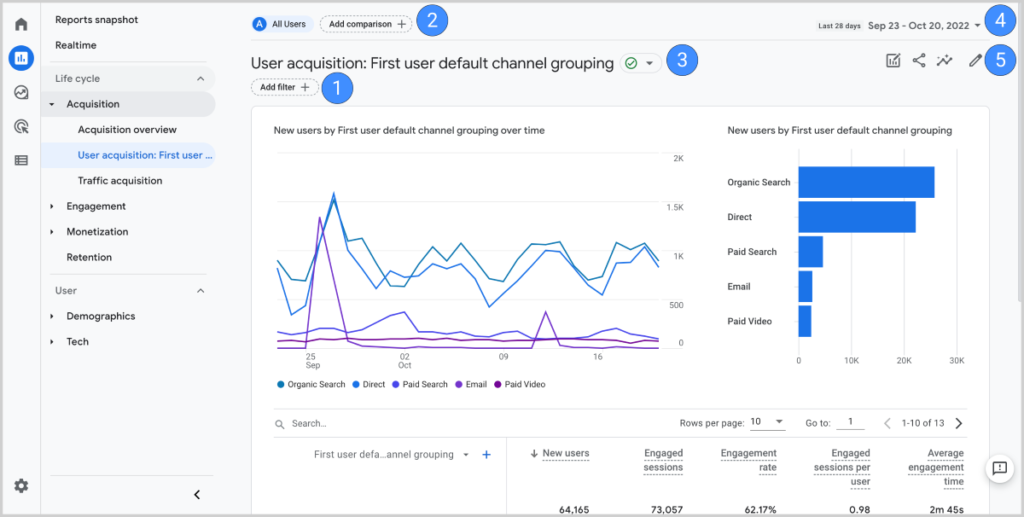
Google Analytics 4 (GA4) is a website analytics tool that tracks user engagement and website traffic.
In other words, it assists you in understanding who your audience is and what they do when they visit your website.
GA4 is the most recent version of Universal Analytics, and it contains significant tools for tracking the consumer journey across numerous platforms.
With all GA4 metrics tracked as events, you can gain a deeper knowledge of how people interact with your content and find the pages and screens with the highest levels of engagement.
It is simple to add a GA4 property to your website. Once your property is set up, you will have access to a wealth of data that will allow you to better analyze the performance of your blog.
The best part is totally free.
2. Google Search Console
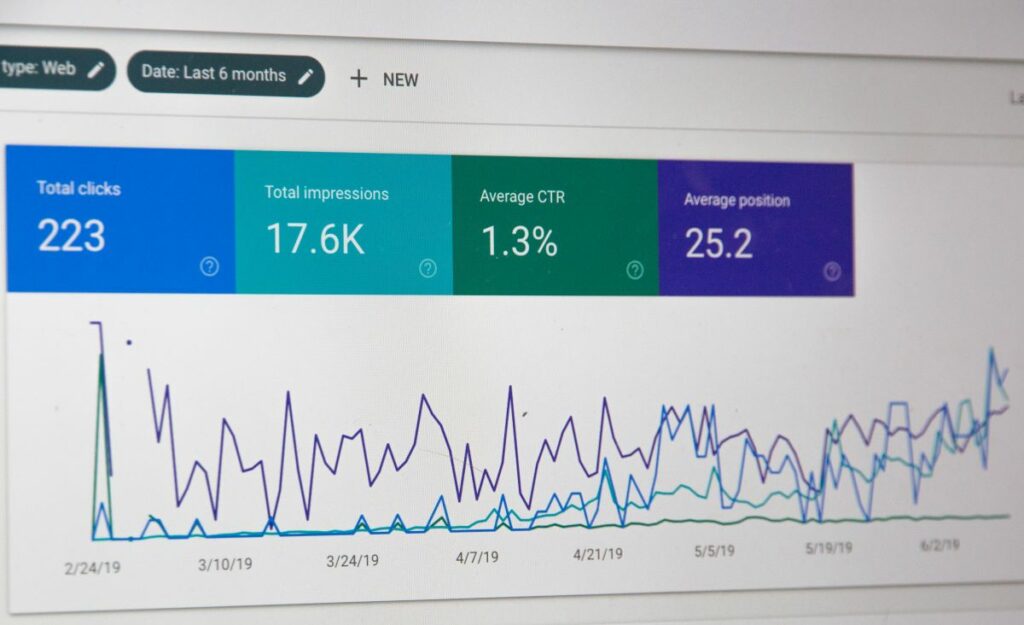
Google Search Console (GSC) is yet another Google Marketing Platform tool. It gives you access to data that will assist you in understanding how your site performs on Google’s search engine results page.
You may keep track of key metrics like impressions, clicks, average position, and Click-Through Rate (CTR) inside GSC to see both current and historical performance.
You can drill down into these metrics even further by viewing customer search queries and individual pages on your website to determine which queries and blogs are delivering the most traffic to your site.
You can not only receive insights into your blog’s performance, but you can also access data on mobile performance, crawlability, indexing, and other factors to assist you enhance your overall website ranking.
Prancing: FREE
3. HubSpot
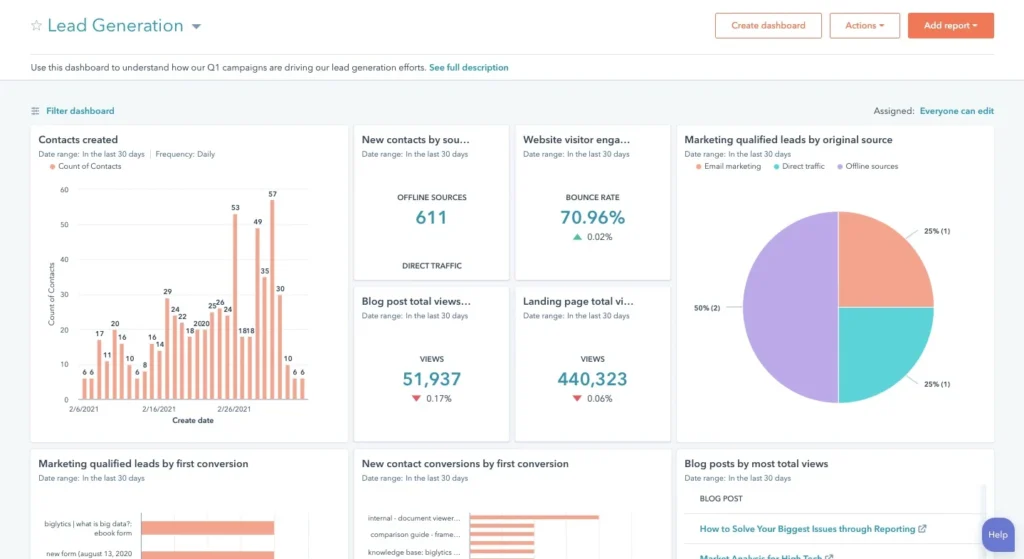
HubSpot helps you to track your inbound marketing plan from one location.
To be more particular, you can track data from your sponsored ads (PPC), social media, and search campaigns to get a comprehensive view of your marketing performance.
You can do the following using HubSpot Marketing Hub:
The advantage of using a solution like HubSpot is that it allows you to track your complete customer lifecycle from beginning to end. This implies that you can track users as they progress through the sales funnel—from the time they visit the blog to the time they become a customer. making it possible to tie blog performance to your bottom line.
Pricing: Free, with premium plans starting at $45 per month.
4. Semrush
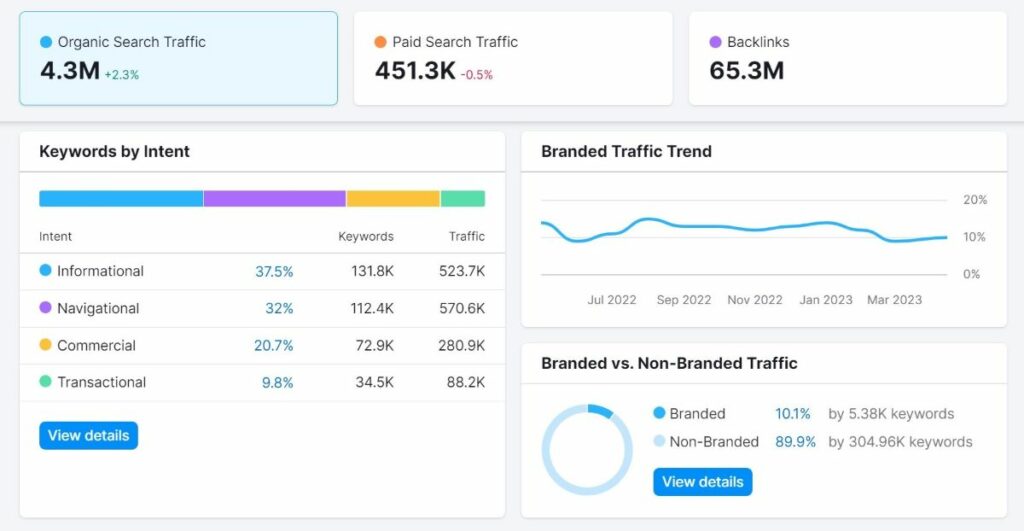
Semrush is a search engine optimization (SEO) application and a blog analytics tool that allows you to aggregate data from all of the channels that contribute to the performance of your website.
Semrush can assist you with optimizing existing content or discovering new trending keywords for your blog content.
Its features make it easier for you to develop content that ranks by assisting you with:
You can also utilize its competitor tool to learn about your competitors’ position on search engine results pages (SERPs).
Pricing: Paid plans begin at $119.95 per month.
5. Momently.
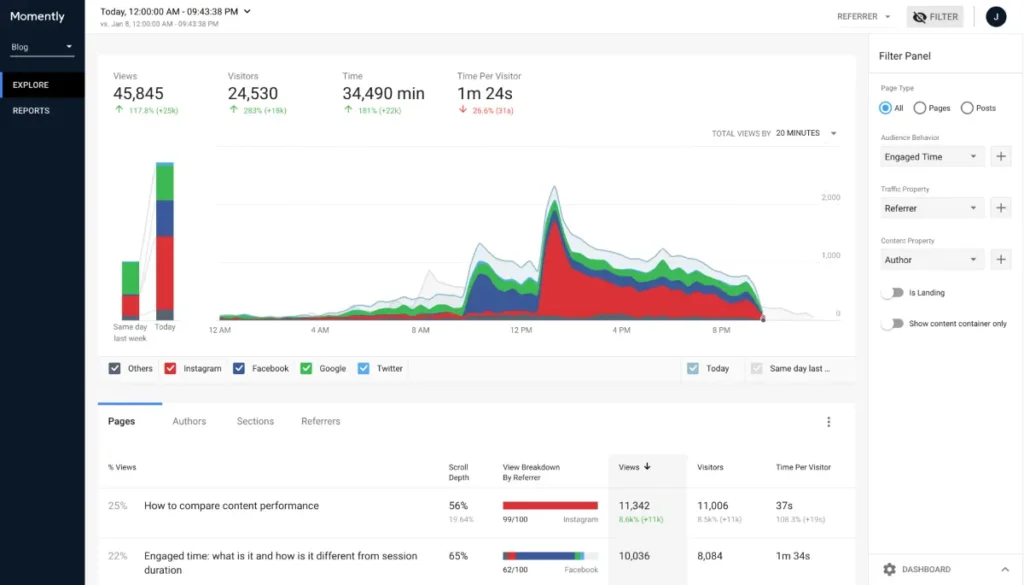
Momently is a cutting-edge blog analytics tool that provides businesses and content providers with real-time insights into their online presence. It is a comprehensive and user-friendly solution for monitoring, analyzing, and optimizing digital content and marketing efforts across several channels and platforms.
Momently Platform Blog Analytics Features:
Pricing: starting at $299/month
6. Tableau.
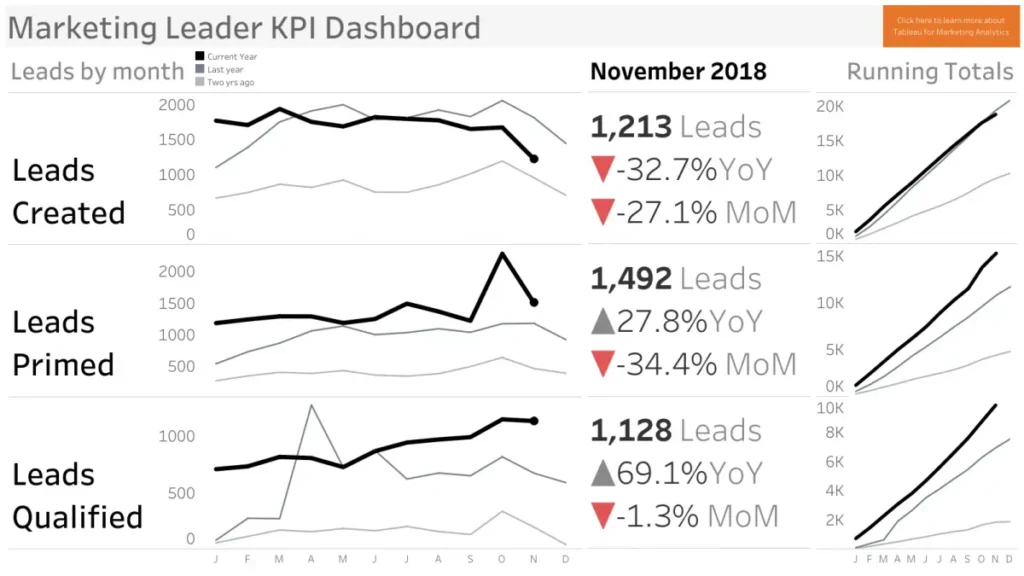
Tableau is a sophisticated and easy-to-use data visualization and business intelligence tool that enables businesses to turn raw data into actionable insights. It provides a full set of tools for data exploration, analysis, and the building of interactive dashboards, making it a popular choice for enterprises of all sizes when making data-driven choices.
Tableau Platform Blog Analytics Features
Pricing: starting at $70/month
7. Microsoft Clarity
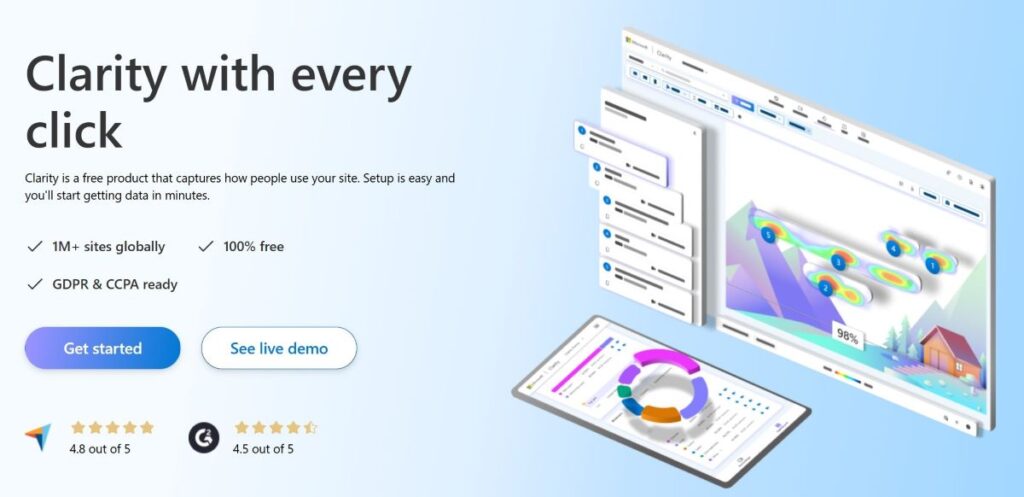
Ever wonder what your readers are actually doing on your blog? Microsoft Clarity makes that super easy — and it’s completely free.
It offers heatmaps that show where people click, how far they scroll, and which parts of your content they’re skipping. Even better? It includes session replays. So you can watch real visitors move around your site, like a screen recording. It’s a goldmine for improving user experience without guessing.
Example: You might discover that visitors are ignoring your sidebar or rage-clicking a broken button. That insight alone can help you tweak your layout and increase engagement.
Pro Tip: Pair Clarity with your existing GA4 setup. Clarity doesn’t replace GA4, but it fills in the visual gap that numbers can’t always explain.
8. Fathom Analytics
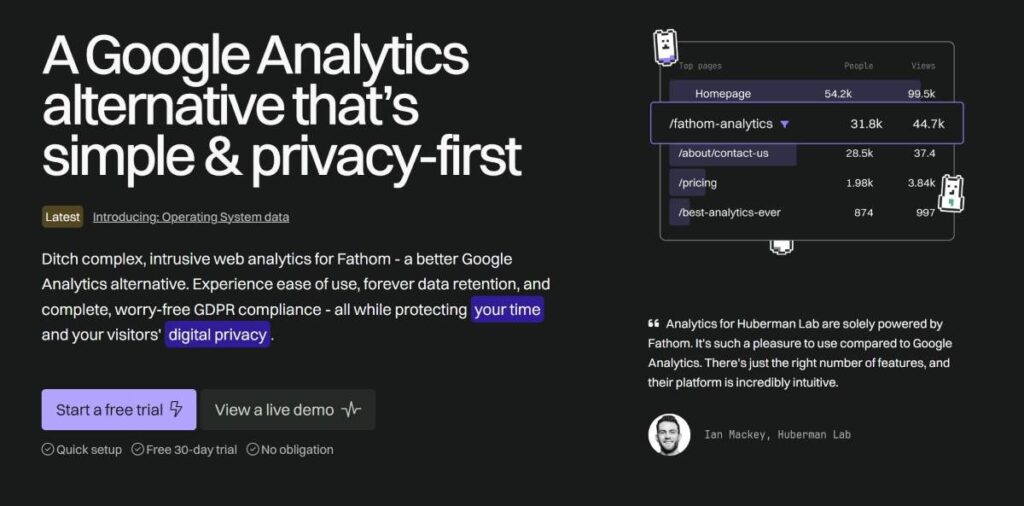
If you’re focused on data privacy or want to avoid cookie banners altogether, Fathom Analytics might be your dream tool.
It’s a privacy-first, GDPR-compliant analytics platform that tracks essential metrics like page views, referral sources, bounce rates, and top content. But here’s the best part: it does it all without collecting personal data or using invasive cookies.
Example: Fathom is great for personal blogs, portfolio sites, or niche content creators who want simple stats without violating their visitors’ privacy.
Pro Tip: Fathom has a flat-fee pricing model, so it’s ideal if you hate surprise charges based on traffic spikes.
9. Plausible & Simple Analytics
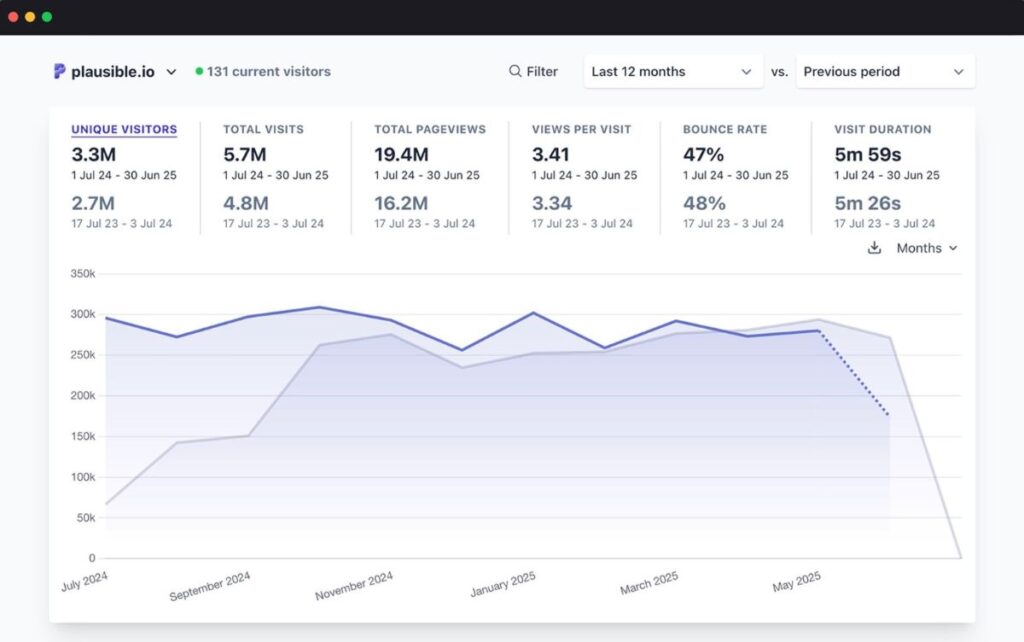
If you want something that’s clean, fast, and doesn’t feel like a spaceship cockpit (looking at you, GA4 ), check out Plausible or Simple Analytics.
Both are lightweight analytics tools that:
- Don’t use cookies
- Are fully GDPR/CCPA compliant
- Show you real-time data with a minimalist dashboard
They give you just the essentials — page views, sources, bounce rate, top pages — in a format that takes literally 10 seconds to understand.
Example: A blogger who just launched a personal finance blog can quickly see which posts are getting traction — without needing a course to understand the dashboard.
Pro Tip: Use Plausible if you’re into open-source projects and want to self-host. Choose Simple Analytics for a plug-and-play experience with built-in link previews and easy sharing.
Top 6 Metrics for Monitoring Blog Performance.

The metrics you use to track blog performance will be determined by your goals and where the content falls in your buyer funnel.
The following are some common overarching aims for blog posts:
Let’s take a look at the most frequent metrics for blog analysis that are applicable to all stages of your customer funnel:
1. Traffic.

Because it measures how successful you are at attracting people to your blog, traffic is the most crucial indicator you can use to track blog performance.
If your overall objective is to generate more leads through your content, you will be unable to do it without traffic. (Low traffic indicates that users are not discovering your blog.)
You can further investigate your traffic performance by seeing traffic by channel. You will be able to discover the channels that are driving the most traffic and focus on increasing the top performers as a result of this.
For example, if one of your blog’s goals is to increase keyword rankings and organic traffic, you would track the organic channel because it is the primary channel linked with these elements.
2. Social Shares.
Social shares are an excellent way to gauge the popularity of your material. This metric displays the number of times your blog was shared on various social media platforms.
Conversations about blog postings rarely take place in blog comments these days, as people would rather use their social platforms for this.
Include social sharing buttons on your blog pages to encourage your audience to spread your posts.
3. Keyword Rankings.
A keyword ranking indicates a web page’s position on SERPs for a specific keyword.
This measure might help you understand how your blog ranks for the desired term. Naturally, if you have properly optimized your blog, you may anticipate your ranking to rise over time.
You may also utilize keyword ranking to track relevant terms for which you previously did not rank. This might help you find new ways to boost your organic search performance.
4. Engagement Rate Performance.
GA4 has introduced a new measure called engagement rate. This indicator displays the number of active sessions split by the total number of sessions.
In other words, it will assist you in understanding how long a person remains on your website and how they engage with it.
This indicator can help you answer important questions, such as whether readers are getting what they are seeking when they arrive on your page and which blogs you can tweak to boost performance.
When analyzing engagement rate, keep this measure in mind along with others (time per pageview, average time per session, and exit rate) to determine the success of your content.
5. Backlinks.

Backlinks will assist you in determining the number of websites that link to your blog or pages. Good-quality backlinks are an important ranking element for search engines.
Increasing your backlinks is another wonderful technique to influence your traffic because as you obtain more and more backlinks, you are exposed to the traffic and audience of the referring domains.
6. Conversions.

Finally, conversions can help you track the number of activities a user does as a result of reading your blog post.
Conversions can be anything relevant to your goal, such as submitting a form, subscribing to a newsletter, starting a conversation, and so on.
Create defined conversion paths when working on your blog post to help you measure the impact of your content.
7. Content Velocity

Content velocity refers to how often you publish new blog posts or refresh existing ones. This metric helps you understand whether you’re keeping up with the pace your audience and search engines expect. It is not just about posting more often. It is about maintaining a consistent rhythm that builds momentum and trust.
For example, a blog that publishes one high-quality post every week is likely to perform better in the long run than one that publishes five posts in one month and then goes silent for the next two.
Tracking your content velocity can help you spot content gaps, avoid burnout, and plan a sustainable editorial calendar. Some tools, like Semrush or HubSpot’s content planner, can help you visualize this over time.
Tip: Refreshing old content counts too. If you update a post from 2022 with new data, visuals, and internal links, that adds to your content velocity without starting from scratch.
8. AI Readability and Tone Analysis

In a world where AI-generated content is everywhere, making sure your blog sounds human, consistent, and aligned with your brand is more important than ever. This is where AI readability and tone analysis tools come in.
Tools like Grammarly, Jasper, and Writer can now go beyond basic grammar checks. They evaluate the tone of your writing, highlight confusing sentences, and even suggest ways to make your message clearer. Whether your tone is friendly, professional, informative, or persuasive, consistency builds reader trust and keeps people engaged.
For instance, if your blog has a casual and motivational tone, a sudden shift to a robotic or overly formal voice in one article can feel off. These tools catch that before your readers do.
Tip: Use these tools after drafting but before publishing. A quick tone check can help you keep your blog voice consistent, especially if you have multiple contributors or use AI writing assistance.
Bottom line
As I indicated at the start of this article, creating blog content can be difficult. That is why you must have the right tools and KPIs in place to assist you in assessing the success of your content after it has been released. Using the information in this piece, you will be able to construct your own blog analytics system that will assist you in doing just that.







